Engage NY Eureka Math 4th Grade Module 4 Lesson 13 Answer Key
Eureka Math Grade 4 Module 4 Lesson 13 Practice Sheet Answer Key
Question 1.
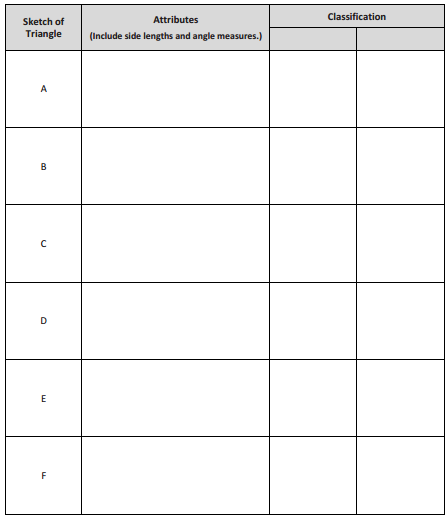
Answer:
Eureka Math Grade 4 Module 4 Lesson 13 Problem Set Answer Key
Question 1.
Classify each triangle by its side lengths and angle measurements. Circle the correct names.
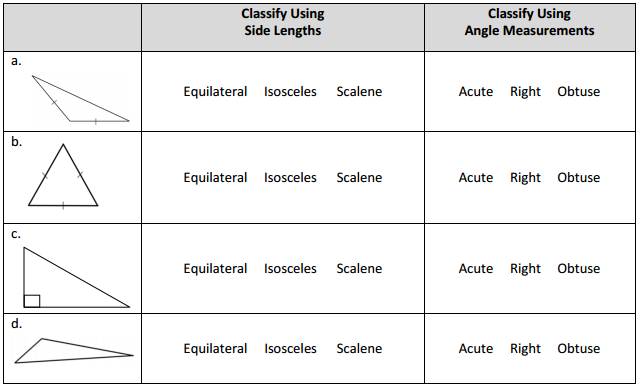
Answer:
Question 2.
∆ ABC has one line of symmetry as shown. What does this tell you about the measures of ∠A and ∠C?

Answer:
3. ∆ DEF has three lines of symmetry as shown.
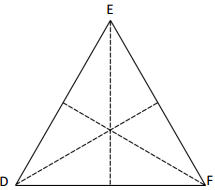
Question a.
How can the lines of symmetry help you to figure out which angles are equal?
Question b.
∆ DEF has a perimeter of 30 cm. Label the side lengths.
Answer:
Question 4.
Use a ruler to connect points to form two other triangles. Use each point only once. None of the triangles may overlap. One or two points will be unused. Name and classify the three triangles below. The first one has been done for you.
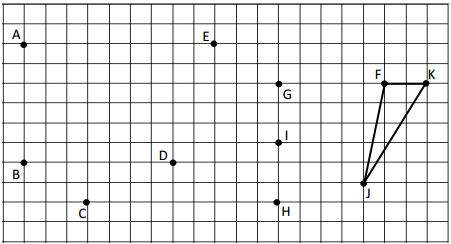

Answer:
Question 5a.
List three points from the grid above that, when connected by segments, do not result in a triangle.
Answer:
Question 5b.
Why didn’t the three points you listed result in a triangle when connected by segments?
Answer:
Question 6.
Can a triangle have two right angles? Explain.
Answer:
Eureka Math Grade 4 Module 4 Lesson 13 Exit Ticket Answer Key
Use appropriate tools to solve the following problems:
Question 1.
The triangles below have been classified by shared attributes (side length or angle type). Use the words acute, right, obtuse, scalene, isosceles, or equilateral to label the headings to identify the way the triangles have been sorted.
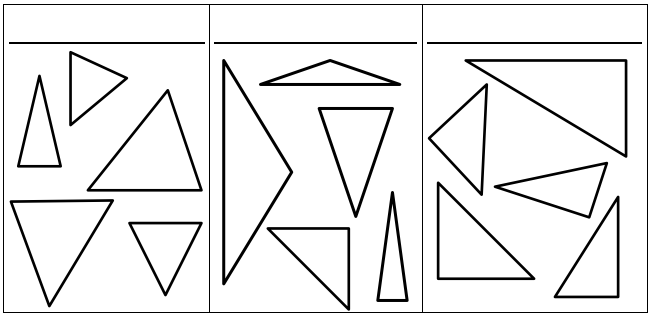
Answer:
Question 2.
Draw lines to identify each triangle according to angle type and side length.
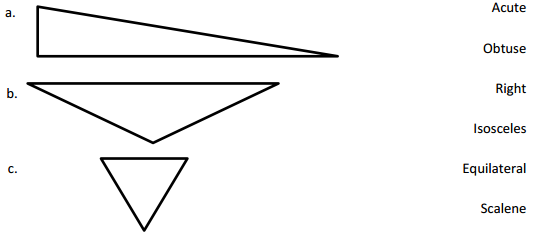
Answer:
Question 3.
Identify and draw any lines of symmetry in the triangles in Problem 2.
Answer:
Eureka Math Grade 4 Module 4 Lesson 13 Homework Answer Key
Question 1.
Classify each triangle by its side lengths and angle measurements. Circle the correct names.
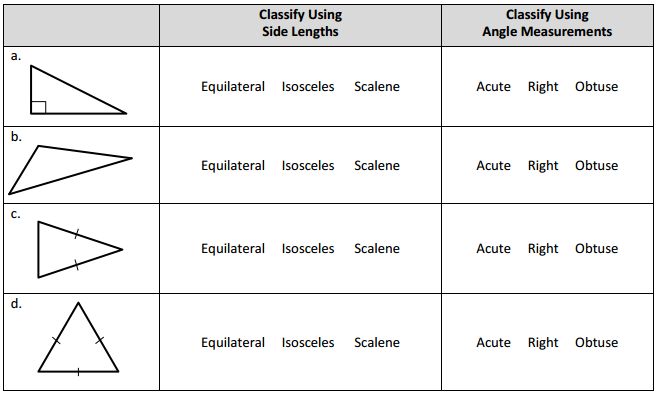
Answer:
Question 2a.
∆ ABC has one line of symmetry as shown. Is the measure of ∠A greater tyhan, less than or equal to ∠C?

Answer:
Question 2b.
∆ DEF is scalene. What do you observe about its angles? Explain.
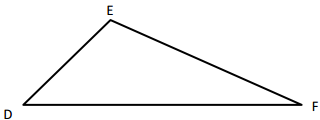
Answer:
Question 3.
Use a ruler to connect points to form two other triangles. Use each point only once. None of the triangles may overlap. Two points will be unused. Name and classify the three triangles below.
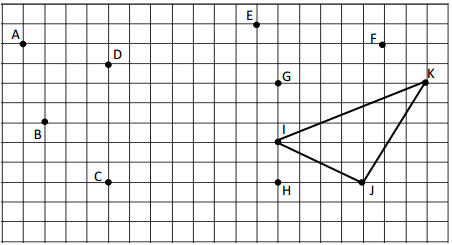

Answer:
Question 4.
If the perimeter of an equilateral triangle is 15 cm, what is the length of each side?
Answer:
Question 5.
Can a triangle have more than one obtuse angle? Explain.
Answer:
Question 6.
Can a triangle have one obtuse angle and one right angle? Explain.
Answer: